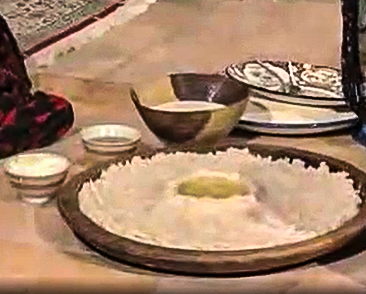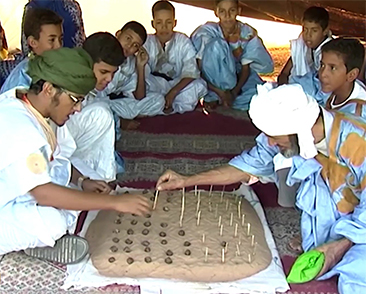
Hassani literature in its prose and poetry components, has been marked by various changes and mutations that have influenced it both in content and form. That is why it has been classified into ancient and modern literature with particular specificities.
Since this literary genre was only transmitted verbally, only few texts have been preserved. Moreover, the man’s strength in the Saharan customs is judged according to his ability to memorize Hassani poems.
In Southern Morocco, poets succeeded by their ability to memorize Hassani poems.
Themes of Hassani poetry
The Saharan environment and Bedouin lifestyle with its traditions and customs have greatly and wonderfully impacted Hassani literature. We find in Hassani prose and poetry the Sahrawi's different journeys, the constant search for oases, fertile lands and wells.
In addition, the Saharawi man made sure to relate the smallest details of his life through a description of his cattle, horses, camels, or caravan.
Saharawi landscape is also present through the plant cover, sand dunes, tents, jewelry and clothing style, as well as the celebration of moments of joy, sadness and ardent love.
Specificities of Hassani poetry
Poetry has not been the sole prerogative of men. Women poets have also distinguished themselves especially in the "tebraâ", whose theme is about the courtship made by women to men. This is a recent genre of poetry where the poems are composed of two parts ending with the same rhyme, and sometimes the "tebraâ" is related to obscene flattery.
Moreover, the Hassani poet is distinguished by his deep aesthetic sense and his masterful musical ear. His poetry is like a painting where the painter gives free rein to his imagination to give life to his work that he weaves with words. He is excellent in describing nature at sunset with a prairie full of flowers as a backstory.
Colors of this painting are inflamed and find their homogeneity when it is about flattering women, during an event, all in the form of a unlimited oral performance.
This is usually held around a narrator under the light of a warm fire. Saharawis compete with proverbs, riddles, anecdotes and tales of legendary heroes, to forget the fatigue of the day.
Also, a word in Hassani can have several meanings, which is why it is important to be aware of the possibility of misunderstandings. In other words, prose is the poor relation of Saharawi literature, except for proverbs. Poetry, poets and singers are therefore the most popular.
Hassani poetry and singing
Singers in Hassani dialect (lkaoun) have distinguished themselves in poetic criticism. They are therefore informed and experienced judges, able to distinguish the true poet from the false thanks to the experience they have accumulated.
In southern Morocco, the widespread singing is played to the rhythm of the drum (tbel). This is a new musical genre which has its own fans and musicians. The drum used is made of a large barrel made from the roots of trees that are widely known in the Sahara.
It is also called "Tazouh" and made of the skin of goats, camels or cows. Craftsmen carefully tie the leather with ropes and thin stick, so it can produce a huge and sonorous sound, and will then be decorated with henna.
On the wonderful rhythms of the drum, songs are chanted in Hassanis verses "Achouar" and "Nhaya" resound. Each verse is composed in a particular way, and a rhythmic dance on instruments like "Ardin" and "Tidinite" follows the melodies.
The Hassani poem chanted with musical instruments is called "houl", while the one interpreted in poem is called " lerna ". The one played with the drum is "Itbel".



